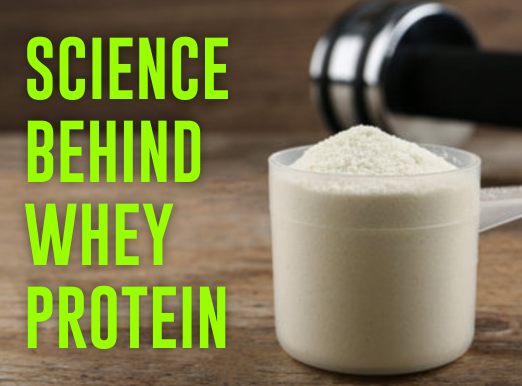We live in a fast-paced world where eating healthily might be tough. People are eating less meat, which is the main source of nutritional protein. Many people today are physically active, which puts additional strain on bodily systems and raises the demand for protein. Protein is so necessary that your body will scavenge protein from less important places (like muscle) to meet the needs of the systems that keep you alive. Whey protein powder has become a fitness and health industry foundation for good reason. It is essential for promoting muscle growth and aiding in post-workout recuperation. In this blog post, we’ll look at the science behind protein powder and how it can help people reach their fitness objectives. This article will shed light on the factors that make protein powder a potent tool for muscle development and recovery, whether you’re an athlete, a gym-goer, or simply inquisitive about the science.
Overview of the India Whey Protein Ingredients Market
The Whey Protein Ingredients Market in India is predicted to be $860 million in 2019 and is expected to grow at a CAGR of 37.64% between 2020 and 2025. The rising popularity of fitness activities, particularly among millennials, and India’s growing population are driving up demand for whey protein components. As a result of the increase in active lifestyles and health consciousness, people are eating more nutritious foods and beverages. Whey protein components are high in protein and have a high nutritional value, making them popular in a variety of food and beverage applications.
Whey protein has become a fitness and health staple, yet many people are not aware of its origins and the science underlying its success. Let’s dive into the specifics of whey protein.
How is whey protein processed?
Whey protein is a byproduct of the cheese-making process. When milk is coagulated, it separates into two components: curds and whey. The curds are utilized to make cheese, while the liquid whey is processed further to extract the protein. Whey protein powder is made by drying this protein.
What role does whey protein play in the body?
Whey protein delivers vital amino acids, which are the building blocks of muscles, to the body. These amino acids are rapidly delivered to muscle tissues, where they help in repair and growth. Whey protein has also been demonstrated to enhance the production of anabolic hormones like insulin, which promotes muscle building and fat burning.
How is whey protein manufactured?
To make whey protein, the liquid whey is filtered via many steps to eliminate lipids and carbs. The moisture is subsequently removed through a drying process, resulting in a powdered form. To make a protein shake, combine this powder with water, milk, or any other favorite beverage.
Does protein have varied characteristics, or does it all come from the same place?
While the source of whey protein is stable (milk), the quality might vary depending on a number of factors. These include the milk’s origin, processing processes, and whey protein type (concentrate, isolate, or hydrolysate). Purity and protein concentration can vary, with whey protein isolates generally containing more protein and less fat and lactose.
What amino acids are included in whey protein?
Amino acids are chemical molecules that serve as protein-building components. Some amino acids are naturally formed in our bodies by organs such as the liver, pancreas, and kidneys, but there are several amino acids that our systems require but do not create. These proteins can be found in foods as well as supplements such as whey protein. The biological value of whey protein is so great that our bodies absorb more amino acids and nutrients from it than from other protein sources. As a result, it is our body’s preferred protein source.
Whey protein contains the following amino acids: –
- BCAAs (branched-chain amino acids) such as valine, leucine, and isoleucine- These amino acids aid in muscle development and maintenance.
- Lysine, an amino acid that promotes immunological health, reduces anxiety, and increases calcium intake
- Tyrosine, which is involved in the creation of neurotransmitters.
- Cysteine, a strong antioxidant
- Threonine, which aids in metabolism
- Both tryptophan and histidine are required for protein synthesis.
What are the advantages of whey protein?
- Whey protein promotes muscle protein synthesis
- Whey protein helps your body recuperate while you sleep.
- Whey protein improves your workout.
- Whey protein aids in weight loss.
- Whey protein supplementation is especially beneficial for women, as research suggests that it may boost osteoblast proliferation and activity, resulting in higher bone density.
What are the disadvantages of whey protein?
Whey protein is a healthy supplement that has no negative side effects when consumed in moderation. However, as with many supplements and even certain foods, excessive whey protein consumption may result in a few minor adverse effects.
Whey protein has the following negative effects:
- A rise in bowel motions
- Migraine
- Fatigue
- Nausea and
- Bloating
- Increased thirst
- Acne
- Less hunger
To take advantage of all of the benefits without experiencing any adverse effects, it is best to stick to the serving guidelines.
The Bottom Line
Whey protein is more than just a supplement; it is the result of complex processes and scientific breakthroughs. Understanding the origin and advantages of what customers consume is becoming increasingly important as they grow more health-conscious. Most specialists, from the science lab to the sports arena, recommend whey as a completely complete protein source. Whey protein is high in a variety of amino acids that support our bodily processes, and it beats other proteins on the market due to its great biological value. Whey protein is an unrivaled protein source for everything from muscle building and maintenance to healthy weight loss.

